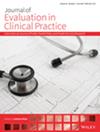‘Am I not Talking to any Medical Doctors Today?’—Evaluation of Effective and Ineffective Interactional Practices in Spinal Pain Clinic Consultations
Abstract
Background
Evaluating communication in clinical settings is essential for enhancing patient satisfaction and improving treatment outcomes.
Objective
This study examined the quality of consultations and communication practices used at a hospital-based Danish Medical Spine Clinic.
Methods
Data included audio-taped consultations with patients suffering from low back pain and subsequent patient interviews. The methodological approach to analysing consultation recordings was Conversation Analysis, while interviews were openly coded and analysed thematically. By comparing the services delivered by the healthcare professionals and the patients' reflections, effective and less effective practices were identified.
Results
The analyses showed that (1) diagnostic and prognostic information provided, partly based on MR imaging, was generally perceived as satisfactory by patients, and (2) treatment plans were meaningful to patients and developed through a collaborative process. Moreover, (3) healthcare professionals' communication was clear and displayed an orientation towards achieving mutual understanding with patients. Finally, (4) an initial outline of the consultation facilitated alignment of expectations. However, the analyses also demonstrated discrepancies between patient expectations and the actual consultation experience concerning (1) the occupational background of the clinician, (2) the purpose of the consultation, and (3) the kind of help offered by the clinic. These mismatches contributed to lower patient satisfaction and prompted negotiations around epistemic authority and legitimation of professional identity during consultations.
Discussion
Improved alignment of patients' expectations could facilitate more effective consultations. Furthermore, despite the patients' satisfaction, the routine practice of explaining MR findings should be reconsidered based on recent evidence from prognostic research, which questions their relevance.

 求助内容:
求助内容: 应助结果提醒方式:
应助结果提醒方式:


